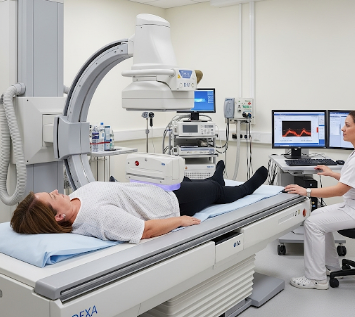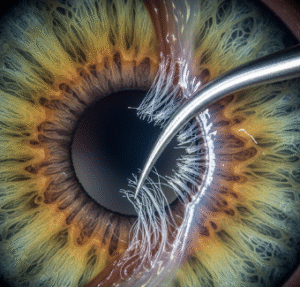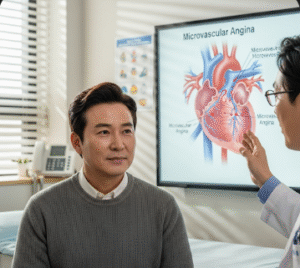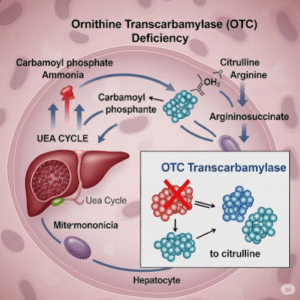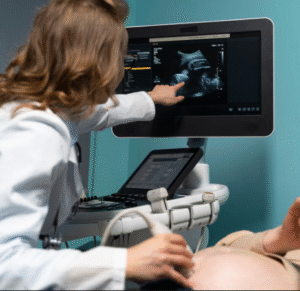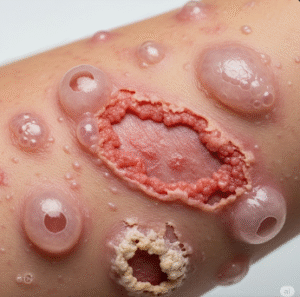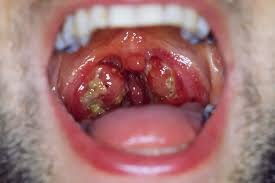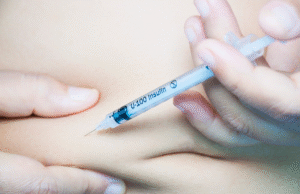Overview
A Bone Density Scan, commonly known as a DEXA (Dual-Energy X-ray Absorptiometry) scan, is a non-invasive imaging test used to measure bone mineral density (BMD). This test is crucial in the diagnosis, monitoring, and prevention of osteoporosis and other bone-related disorders.
Importance of a DEXA scan:
- Detects osteoporosis early, even before fractures occur.
- Assesses fracture risk in postmenopausal women, men over 50, and at-risk individuals.
- Monitors treatment efficacy for osteoporosis or other bone-related conditions.
- Guides lifestyle and medication interventions to strengthen bone health.
In South Korea, DEXA scans are widely available in hospitals, diagnostic centers, and specialized clinics. Advanced digital DEXA machines provide precise, low-radiation measurements, ensuring safety and accuracy.
Why It’s Done
DEXA scans are primarily performed to assess bone strength and risk of fractures.
Common indications include:
- ➤ Osteoporosis screening – particularly in postmenopausal women and men over 50.
- ➤ History of fractures – even after minor trauma.
- ➤ Monitoring bone loss – in patients on long-term corticosteroids or with endocrine disorders.
- ➤ Assessment before medications – e.g., hormone therapy or osteoporosis drugs.
- ➤ Evaluation of metabolic bone diseases – such as osteopenia, Paget’s disease, or hyperparathyroidism.
- ➤ Risk assessment in chronic conditions – such as rheumatoid arthritis, kidney disease, or malabsorption syndromes.
Benefits for patients:
- ✔️ Provides early detection of bone loss before fractures occur.
- ✔️ Helps guide treatment plans to prevent osteoporosis-related complications.
- ✔️ Enables personalized recommendations for lifestyle and nutrition.
Alternatives
While DEXA scan is the gold standard, some alternatives or complementary tests exist:
- ➤ Quantitative Ultrasound (QUS): Uses sound waves to estimate bone density, usually at the heel.
- ➤ CT-based bone densitometry: More detailed but higher radiation exposure.
- ➤ Bone turnover markers: Blood or urine tests that evaluate bone formation and resorption.
- ➤ X-rays: Can detect fractures but not early bone loss.
Key point: DEXA remains the most accurate, widely accepted, and non-invasive method for assessing bone mineral density.
Preparation
DEXA scan requires minimal preparation, but following instructions ensures accurate results.
Preparation steps include:
- ✅ Avoid calcium supplements 24 hours before the test, unless instructed by a doctor.
- ✅ Wear comfortable clothing without metal fasteners, zippers, or belts.
- ✅ Inform the technician about recent imaging studies with contrast, pregnancy, or implants.
- ✅ Fasting is not required for a DEXA scan.
- ✅ Provide medical history: Previous fractures, surgeries, medications, or conditions affecting bones.
Important: Pregnant women are usually advised to postpone the scan due to radiation exposure, though DEXA uses very low doses.
How It’s Done
DEXA scan is a painless and quick procedure.
Step-by-step process:
- Patient positioning: Lying on a padded table, usually flat on the back.
- Scanning area: Commonly the lumbar spine, hip, and sometimes forearm.
- X-ray source: The DEXA machine emits low-dose X-rays at two different energy levels to measure bone density.
- Scan duration: Each region takes 5–10 minutes, total test usually 15–30 minutes.
- Data analysis: Computer calculates T-score and Z-score:
- T-score: Compares patient’s bone density with a healthy young adult (used to diagnose osteoporosis).
- Z-score: Compares with age- and sex-matched population (used in premenopausal women, men <50).
Comfort and safety:
- Non-invasive and painless.
- Minimal radiation exposure – less than a day’s natural background radiation.
- No anesthesia required.
Recovery & Follow-up
DEXA scan requires no recovery time; patients can resume normal activities immediately.
Post-scan follow-up:
- Discuss results with a physician to assess osteoporosis or fracture risk.
- Treatment planning: May include medications, supplements (calcium, vitamin D), or lifestyle changes.
- Repeat scans: Usually every 1–2 years to monitor bone density changes, especially in high-risk patients.
Important: Results should be maintained in personal medical records for longitudinal monitoring.
Possible Complications
DEXA scan is very safe, with minimal risks:
- ⚠️ Radiation exposure: Extremely low; negligible risk.
- ⚠️ Discomfort: Rare, usually only from lying on a hard table.
- ⚠️ Inaccurate results: May occur due to metal implants, severe obesity, or recent contrast studies.
In South Korea, advanced digital DEXA systems and trained technicians ensure accuracy and safety.
Treatment Options / Clinical Relevance in Korea
DEXA scans are an integral part of bone health management in South Korea.
Key features:
- 🏥 Routine osteoporosis screening for postmenopausal women and high-risk men.
- 🏥 Monitoring bone loss in patients receiving long-term steroids, chemotherapy, or hormone therapy.
- 🏥 Integration with lifestyle counseling – diet, exercise, and fall prevention.
- 🏥 Advanced imaging centers provide precise T-score and Z-score analysis.
- 🏥 Follow-up care: Personalized treatment, including bisphosphonates, vitamin D, calcium supplements, and lifestyle interventions.
Hospitals and diagnostic centers:
- Seoul National University Hospital – Comprehensive DEXA services
- Asan Medical Center – Bone health and osteoporosis clinic
- Samsung Medical Center – Preventive and diagnostic DEXA scan
- Local public health centers – Accessible screening programs
Highlights in Korea:
- ✔️ Early detection of osteoporosis reduces fracture risk and associated morbidity.
- ✔️ Digital DEXA systems ensure fast, accurate results.
- ✔️ Integrated with national health programs for bone health.
- ✔️ Supports long-term monitoring and treatment effectiveness.
Highlights
- ➤ DEXA scan is the gold standard for measuring bone mineral density.
- ➤ Detects osteoporosis and assesses fracture risk, enabling early intervention.
- ➤ Non-invasive, painless, and quick, with minimal radiation exposure.
- ➤ Preparation is simple – avoid calcium supplements and wear comfortable clothing.
- ➤ Results include T-score and Z-score, guiding diagnosis and treatment planning.
- ➤ South Korea provides advanced DEXA services, integrated with preventive health care and personalized treatment plans.
- ➤ Regular scans are recommended for high-risk individuals to monitor bone health over time.

